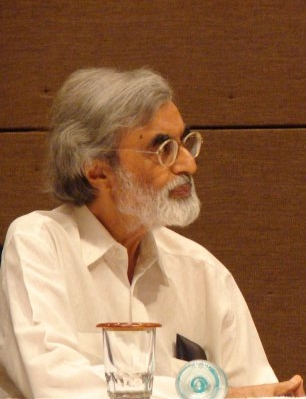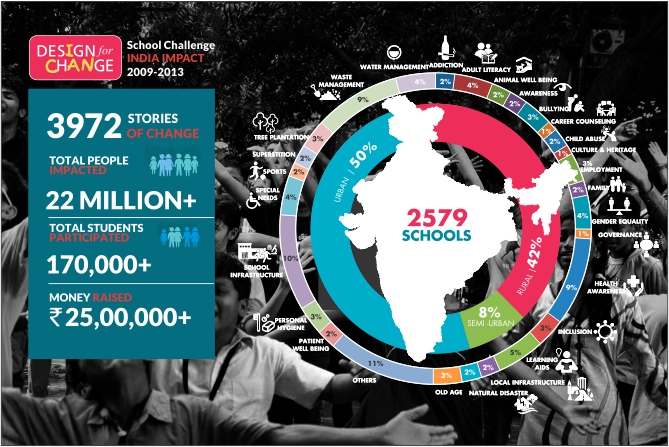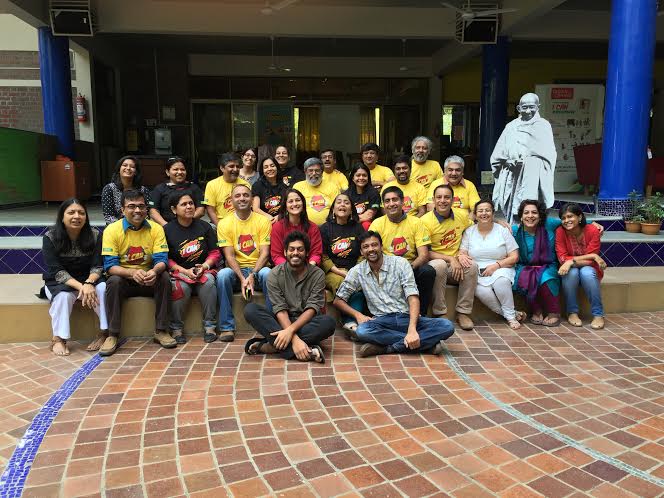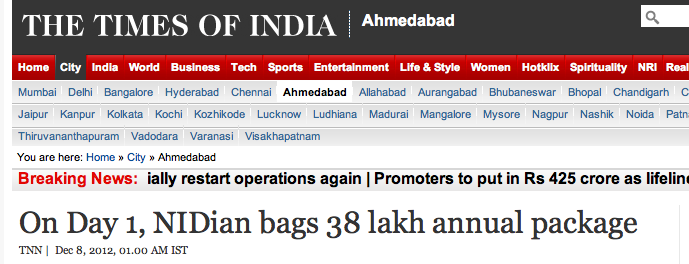Today is International Women’s Day.
Women have a way of bringing new nuances to whatever they do. It’s the same in Design. Women designers have brought such richness to the profession in India, that they deserve a mention here.
I was attending the much-admired Pune Design Festival, a few days ago and couldn’t help noticing that the number of women presenters were too few in comparison to male presenters. While lamenting the idea, I couldn’t help noticing that of the lot, two presentations that moved the entire audience for a standing ovation, were made by women.
Kiran Bir Sethi’s ‘ Design For Change’ has brought the sticky idea of using the power of design to empower school children. It has been done with such finesse and detailing that is characteristic of women.
Swati Ramanathan’s Janagraha made a presentation on designing of roads and related systems, that was equally mind-blogging. Using systems thinking, she goes about solving Bangalore city’s vexed problems, which no man would dare getting into. In the process, she takes on the municipality, the road-making mafia, the city’s dwellers, the successive governments, only to emerge successful and triumphant.
The power of women’s thinking is something, we have not leveraged enough in design. In my professional life, I have been influenced by many women and their work. Fortunately for me, my profession has a lot of women, who bring about an influence in my work, that is distinct and different. I want to mention a few, whose work I have admired.
Nilam Iyer, one of my early teachers in Design, who introduced the idea of using product design, to better the quality of life of artisans. She used design as a means to bring change. She also drilled into me, the uncompromising need for precision and quality.
Rashmi Korjan, who partnered with Grishma Dave to start the first-ever, all-women, design firm has also influenced my professional attitude. She helped me tackle everything with humour, a life skill that is so required to survive in the profession. And when she went after the government with Vision First, I learnt how to be tenacious.
Jaya Jaitley, President of the Dastkari Haat Samiti, with whom I have done several design projects, has also influenced my work. I learnt another life-skill from her: grace. To be graceful in giving people their due.
Women have a way of influencing you with new ideas and pioneering new concepts. Aditi Ranjan is the true-blue design educator. Neelam Chhiber introduced the idea of social entrepreneurship, through Design. Poonam Bir Kasturi believed in the power of the common man to usher change. Her Daily dump is good example of Design democracy. Jyoti Thapa influenced the media and business, through graphic design. Kripa Ananthan, got into automobile design to design the toughest cars in the market. Sujata Keshavan Guha, was audacious enough to go global with her work. Akila Seshasayee challenged the status quo, when it came to graphic design. Suhasini Paul is pioneering the profession of Toy Design. Ragini Brar is a pioneer in educating children through 3D animation. Ashwini Deshpande heads the best design agency in the country.
Maria José Barney, Carol Wills, Jolly Rohatgi, Julie George, all believers of Design, nurtured design projects with artisans, although they are not designers themselves.
Many, many women have taken to teaching design and continuing to inspire the students. Nandita Abraham leads one of the biggest and best design institutes of the country. Many toil in remote villages to give artisans the power of design. Devika Krishnan and Meghna Ajit do exemplary work in the crafts sector.
So many to acknowledge, so many to thank for.
Thanks to all the women in my profession. You are all so integral and important to the profession’s advancement. You bring joy!















